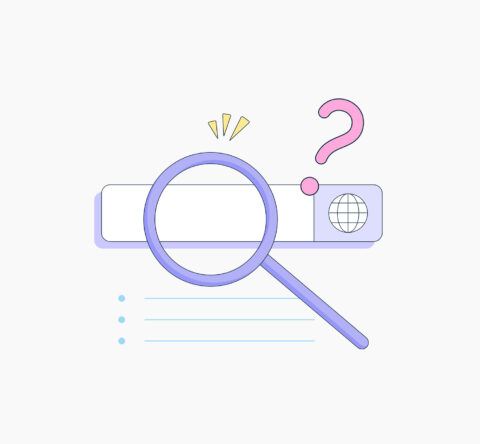Be it ever so tough, you have to lure the click. Bouncing within seconds those users are, the attention span of a claimant does not go past that of a goldfish. Hence, CTA buttons are more than just buttons-line-of-command psychological triggers. The CTA placement psychology might make the difference between mere scrolling and actual conversion.
In this blog, let us talk about the psychology of CTA, some very subtle changes in call-to-action placement, and user behaviour insights that result in exponential growth for conversions. Let’s get into the science of how it works.

Why CTA Placement Isn’t a Guessing Game
The truth about the psychology of CTAs is that there is not one “best spot” for them. However, that does not mean their placement is random. CTA Placement Psychology dictates their placement influence on a user’s likelihood to partake in the action. Even if you have the perfect button in the wrong place, it garners no clicks. It is about reaching the user where his intention rises.
CTA should be placed after understanding what the user feels and thinks at each stage-whether that is “above the fold,” the mid-scroll, or the bottom of a webpage.
The Psychological Triggers Behind High-Converting CTAs
Breaking down the key psychologies behind a landing CTA:
Urgency and Scarcity
Terms such as “Limited Offer” or “Ends Tonight” work by instilling the fear of losing that opportunity whilst putting the pressure to act immediately.
Reciprocity
When you give users something of value, such as a free guide or a free trial, they feel compelled to reciprocate by converting.
Clarity Lessens the Cognitive Load
Benchmark CTA buttons are very clear about what actually happens when someone clicks on them: like Download Report or Get My Quote. This clarity helps the person making the decision.
Emotional Triggers in Marketing
Aside from urgency, tapping into curiosity, fear, joy, or belonging can enormously affect conversion rates. They entice emotion: words like Discover, Unlock, and Join.
Where to Place CTAs for Conversions: Key Zones to Consider
When you dig deeper into Conversion-oriented CTA placement, you will have to understand where to place CTAs for conversions. This has one thing in common: user readiness.
Above the Fold
Use for high-intent pages or repeat visitors. It works best with PPC landing pages, where users are already warm leads.
Mid-Content
It is placed here because it comes after a couple of value-based paragraphs that establish user reasoning, barriers, or motivation. This can be very especially with a long-form blog or product explanations.
Bottom of the Page
The user needs more time to commit to complex services or heavy-detail pages. The time should be given, followed by showing the CTA when the user becomes ready.
To improve your website, you have to understand how to use heatmaps to improve website ux and validate these assumptions using heatmaps- tools like Hotjar or Crazy Egg show where users pause, scroll, or click the most.
CTA Design and Positioning: Details That Matter
Even when your CTA Design and Positioning is in the right spot, its styling has to pop out while still maintaining good branding. Let’s talk about some rules of thumb for designing and placing CTAs:
- Contrast: Ideally, a CTA should contrast with its surroundings, but shouldn’t do so at the expense of your color palette.
- Size: Not necessarily, the bigger, the better. It should have enough presence to be noticed, but not so much as to be intimidating.
- Whitespace: Let it breathe. Crowded call-outs are easily overlooked.
- Directional Cues: Use arrows or images or even have people in your imagery looking subtly toward your call-to-action placement.
These visual cues blend with our natural flow of reading and draw attention, resulting in enhanced engagement.
CTA Placement Psychology in Action: Real-Life Examples
Some are top-performing CTAs, built purely on behavioral science. Here are linkbait examples worth noting:
- Spotify: The soft green CTA on the homepage stays within the brand color palette, yet contrasts enough to pop. It is located just below the value prop.
- HubSpot: This CTA is located above the fold and midway along the feature explanations, reading “Get Started Free.”
- Booking.com: Scarcity and urgency cues such as “Only 2 rooms left!” hover right next to the “Book Now” CTA.
These examples share CTA placement psychology coupled with emotional triggers in marketing aimed at increasing CTR.
Interaction to Next Paint: Speed Matters
The interaction to next paint Google metric, which affects perceived load time and user satisfaction, is quite vital to understand. If your CTA loads last or lags, you are already losing. Speed up your site for CTAs to appear quickly, especially on mobile. Fast, smooth interactions lead users straight into conversions, while slow CTAs hold back the decision.
Analysing Web Behaviour for Smarter CTA Positioning
You don’t even have to guess—all of web behavior analysis gives you info on how users interact with your page:
- Scroll Depth: Do users even get to your CTA?
- Click Maps: Are they clicking links or buttons they shouldn’t?
- Time on Page: Do they take their time being persuaded?
With this information, different CTA placements and copies can be A/B tested. For example, if users drop off mid-article, move your call-to-action placement higher up. If they scroll all the way down, that is your hottest spot.
The Importance of Contextual CTAs
Don’t put all your eggs in one basket with a generic CTA. Recommended placement and messaging are aligned with various touchpoints:
- Product Pages → “Buy Now” or “Check Availability”
- Blogs → “Download the Guide” or “Speak to an Expert”
- Pricing Pages → “Start Free Trial” or “See Plan Comparison”
Providing multiple CTAs in a contextually relevant and strategic manner reduces friction and increases conversion likelihood
PPC Landing Pages & CTA Placement
When it comes to agencies offering ppc services in dubai or for those managing paid ads in other niches, CTA placement is everything.
Much of PPC traffic is high intent and low patience. You have paid for the click, so go with call-to-action placement to get people to decide right away. Above-the-fold CTAs, minimal distractions, and fast-loading buttons are a must.
Common Mistakes to Avoid
- Before we begin, some important terms should be mentioned:
- Too many CTAs: It creates choice paralysis.
- Poor mobile optimization: A CTA working on a desktop might break on mobile.
- Generic copy: “Click Here” is lazy and nonproductive.
- No testing: You won’t know what works unless you try variants.
Final Thoughts: Let Psychology Guide Your CTA Strategy
In a click-driven online world, mastering the art and science of the psychology of CTA is no longer an option; it has become a must-have. It depends on the location, emotional pulls, and attention to detail that will always prove better than educated guesswork.
Use your data. Test your theories. Let your audience show you what works.
Whichever activity you choose- whether you are advertising, writing, or just fine-tuning your funnel greater the chance for a passive visitor to become an active customer is when these concepts are applied throughout your website.
Keep in mind that your site is a conversation, not a billboard. Every call to action should feel like a natural next step in this conversation: something personal, timely, and relevant. When the users feel as though they are being carefully understood and gently encouraged rather than pushed, the desire to hit clicks, convert, and come back becomes much more instinctive.
Related Post
Publications, Insights & News from GTECH








